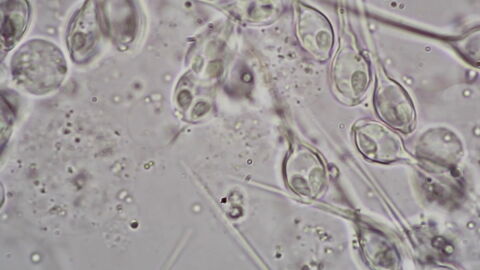At first glance, imagining what a living creature would have looked like about 68 million years ago seems like quite the mission... And yet, specialists have just revealed what they present as the most rigorous reconstruction of the emblematic late Cretaceous period, the Tyrannosaurus rex.
Discover our latest podcast
For now, only the somewhat fictional representations of the Jurassic Park saga had offered the general public a glimpse of these extinct monsters. But the image that has been painstakingly reconstructed by a team of scientists offers a new vision on the T Rex, far from cinematographic clichés.
What little arms you have!
To achieve this, the specialists proceeded layer by layer, first the bones, then the muscles and finally the skin, culminating into a fascinating product. Those who have been fans of Spielberg may be somewhat disappointed with the results: in reality, the beast probably had smooth skin and a plump figure, as evidenced by the latest scientific studies in the field and fossils used by the experts for this project.
Another disconcerting aspect is the fact that the Tyrannosaurus presented on screen displays two tiny forearms, looking almost atrophied. The feathers that some have attributed to the dinosaur also seem to have never existed, as stated in a publication released last year in Biology Letters. And to complete this rather underwhelming picture, the dreaded T Rex was endowed with a very low center of gravity, which means it most likely advanced by dragging its belly as low to the ground as possible.
Though it may seem unsatisfactory for some, this study has finally presented a portrait that is rigorously based on scientific data, and resulting from extremely meticulous work. ‘[The team] worked from a skeleton, spent months properly placing the muscles, and the results are now available to everyone. The time and attention to detail amazed me’, commends paleontologist and artist specialised in the reconstruction of the dinosaur skeletons Scott Hartman, consultant on the project, who admits however that there may still reside a bit of imprecision in the final image his team has produced.
A few concessions
‘As is the case for any reconstruction, there are of course some details [such as its coloring, ed] that we cannot know, and contradictory interpretations are also possible. But I can honestly say that it was the most thorough attempt at reconstructing a missing animal that I worked on,’ says Scott Hartman.
The level of detail achieved by the scientists is indeed unprecedented. In addition to the keratin plates added to the back of the Tyrannosaurus, the specialists also took care to add a bulge of flesh on the chin of the animal to hide its sharp fangs. Further still, the team pushed perfectionism, as the saying goes, from the top of the head to the tips of the nails.The dinosaur’s claws have indeed been voluntarily represented as very blunt when looking at the hind legs, whereas the front legs are much pointier. This subtlety testifies to its classification as a biped animal.
In order to extract a concrete product from this colossal reconstruction work, the specialists set out to create an immense version, that was to be exhibited as part of a paleontological art exhibition at the New Mexico Museum of Natural History and Science. Another way to admire the T rex on the ‘big screen’, but this time, stamped with the seal of scientific rigor!















